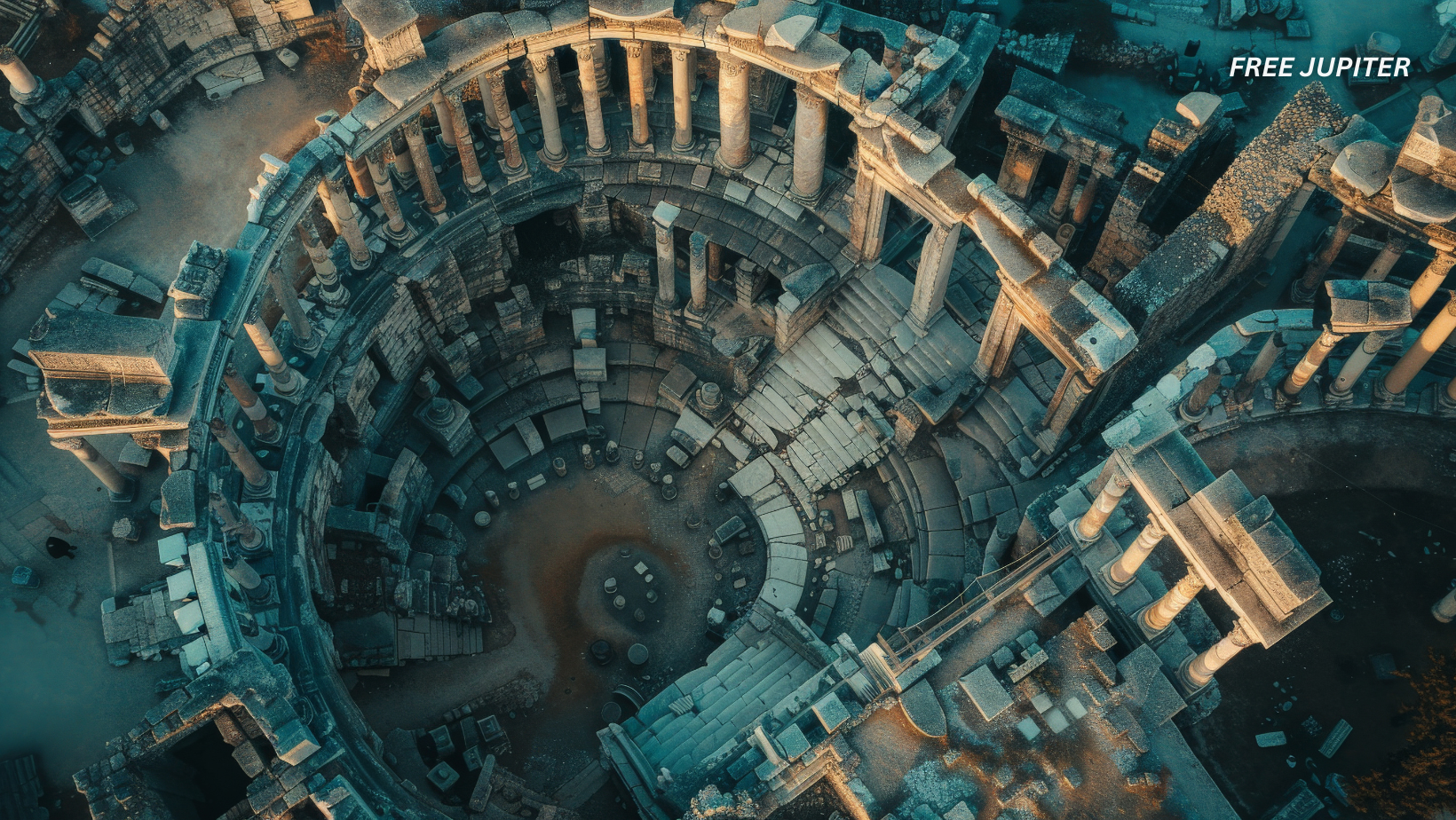Friendly Note: FreeJupiter.com shares general info for curious minds 🌟 Please fact-check all claims—and always check health matters with a professional 💙
When we think of ancient engineering marvels, the Roman Empire often comes to mind. Their aqueducts, amphitheaters, and temples showcase a level of architectural brilliance that continues to captivate historians, engineers, and architects alike. Central to these enduring monuments is a remarkable material: Roman concrete. Unlike many modern concretes that degrade within decades, Roman concrete structures have withstood millennia, surviving earthquakes, weather, and even the relentless assault of seawater. But what exactly makes this ancient material so resilient?
Recent scientific investigations have begun to unravel the mystery, revealing that Roman concrete’s longevity stems not only from its ingredients but also from a sophisticated preparation method that modern science is just starting to appreciate. This discovery could have profound implications for the future of construction, potentially guiding us toward more sustainable and durable building materials.
The Roman Concrete Phenomenon: More Than Just Volcanic Ash and Lime
For centuries, scholars believed the secret behind Roman concrete’s strength lay primarily in its use of pozzolana – a volcanic ash named after the Italian town of Pozzuoli, near Naples. When combined with lime and water, pozzolana undergoes a chemical reaction that forms a sturdy cementitious matrix. This mixture was revolutionary at the time and allowed the Romans to build structures that have lasted for almost two thousand years.
One of the most famous examples is the Pantheon in Rome, whose massive dome remains the largest unreinforced concrete dome in the world. Its survival through centuries of natural disasters and urban development has long been a source of wonder. Similarly, Roman seawalls and harbor structures have resisted the corrosive effects of saltwater far better than many modern counterparts.
However, the simple explanation of volcanic ash plus lime did not fully account for the extraordinary durability observed, especially in marine environments where modern concrete often fails quickly.
Read more: Scientists Uncover Evidence of Ancient Vehicles Dating Back Tens of Thousands of Years
The Lime Clasts: From Flaws to Features
A turning point in understanding Roman concrete came with the discovery of tiny white fragments embedded within the material, known as lime clasts. Previously, these chunks were dismissed as imperfections – evidence of sloppy mixing or inferior craftsmanship. But this interpretation didn’t sit well with Admir Masic, a materials scientist at MIT.
“If the Romans invested so much effort in perfecting their concrete recipes over centuries, why would they tolerate poorly mixed materials?” Masic questioned. His skepticism led to a detailed investigation of these lime clasts, which turned out to be far more than mere byproducts of careless mixing.
Together with a team led by civil engineer Linda Seymour, Masic analyzed 2,000-year-old concrete samples from the archaeological site of Privernum in Italy. Using cutting-edge tools such as scanning electron microscopy, X-ray spectroscopy, and Raman imaging, the researchers examined the chemical composition and microstructure of the lime inclusions.
Hot Mixing: An Ancient Technique Rediscovered
The team’s analysis revealed that the lime clasts were not simply slaked lime, as previously assumed. Instead, the Romans likely employed a process that involved mixing quicklime (calcium oxide) directly with pozzolana and water at very high temperatures-a method the researchers call “hot mixing.”
This approach contrasts with the conventional understanding that Roman concrete was made by mixing slaked lime (calcium hydroxide) with volcanic ash. Slaked lime is produced by adding water to quicklime, creating a less reactive paste. The hot mixing technique, however, involves quicklime reacting with water and pozzolana simultaneously, generating intense heat during the process.
This elevated temperature environment enables chemical reactions that are impossible at lower temperatures. It leads to the formation of unique compounds that enhance the concrete’s strength and durability. Additionally, the heat speeds up the curing process, allowing the concrete to set more rapidly-a practical advantage for large-scale construction projects.
Self-Healing Concrete: Nature’s Own Repair Mechanism
One of the most astonishing features of Roman concrete uncovered by the research is its ability to self-heal. When cracks form, they tend to propagate toward the lime clasts. Upon exposure to water, these lime fragments react chemically to produce a calcium-rich solution. This solution eventually hardens into calcium carbonate, effectively sealing the cracks and preventing them from spreading.
This natural repair process has been observed in other ancient Roman structures, such as the Tomb of Caecilia Metella, where cracks have been filled with calcite deposits. It also helps explain why Roman seawalls, battered by waves for centuries, remain largely intact.
Read more: Archaeologists Find an Ancient Temple Hidden in the Heart of a Cliff
Experimental Validation: Recreating Roman Concrete Today
To confirm their findings, the researchers recreated Roman-style concrete using both ancient and modern recipes that incorporated quicklime. They also prepared control samples without quicklime. When subjected to stress tests that caused cracking, the quicklime-containing concrete healed itself within two weeks, while the control samples remained fractured.
This experimental evidence not only supports the theory of hot mixing but also highlights the potential for developing modern concretes with enhanced durability and self-healing properties.
Why Modern Concrete Often Falls Short
Modern concrete, despite its widespread use, has significant limitations. It is prone to cracking and degradation, especially in harsh environments like coastal areas. Saltwater intrusion leads to crystallization within pores, causing internal pressures that crack the material. Chemical reactions such as sulfate attack and alkali-aggregate reactions further weaken concrete over time.
In contrast, Roman concrete’s interaction with its environment is dynamic and beneficial. The volcanic ash reacts with seawater to form rare minerals like aluminum tobermorite and phillipsite, which contribute to the material’s strength and longevity. These minerals develop gradually, reinforcing the concrete rather than eroding it.
Toward a Greener, More Durable Future
The rediscovery of the hot mixing process and the self-healing abilities of Roman concrete opens exciting possibilities for modern construction. By mimicking these ancient techniques, engineers could create concrete that lasts longer and requires less maintenance, reducing the environmental impact of construction.
The research team is actively exploring ways to commercialize this approach, aiming to produce more sustainable concretes that could extend the lifespan of infrastructure and even improve emerging technologies like 3D-printed concrete. Faster curing times and enhanced durability could revolutionize how buildings and infrastructure are designed and maintained.
Read more: Harvard Researcher Suggests Ancient Martian Civilization Was Destroyed by Alien Nuclear Event
Conclusion: Ancient Wisdom Illuminates Modern Innovation
The Romans were not just builders; they were innovators who developed materials and methods that continue to inspire us today. The revelation that their concrete was made using a hot mixing technique, resulting in remarkable durability and self-healing properties, challenges long-held assumptions and offers a blueprint for the future of construction.
As we face growing challenges related to infrastructure aging and environmental sustainability, revisiting and adapting ancient wisdom could prove invaluable. Roman concrete’s enduring legacy reminds us that sometimes, the best solutions are those that have stood the test of time-literally.










